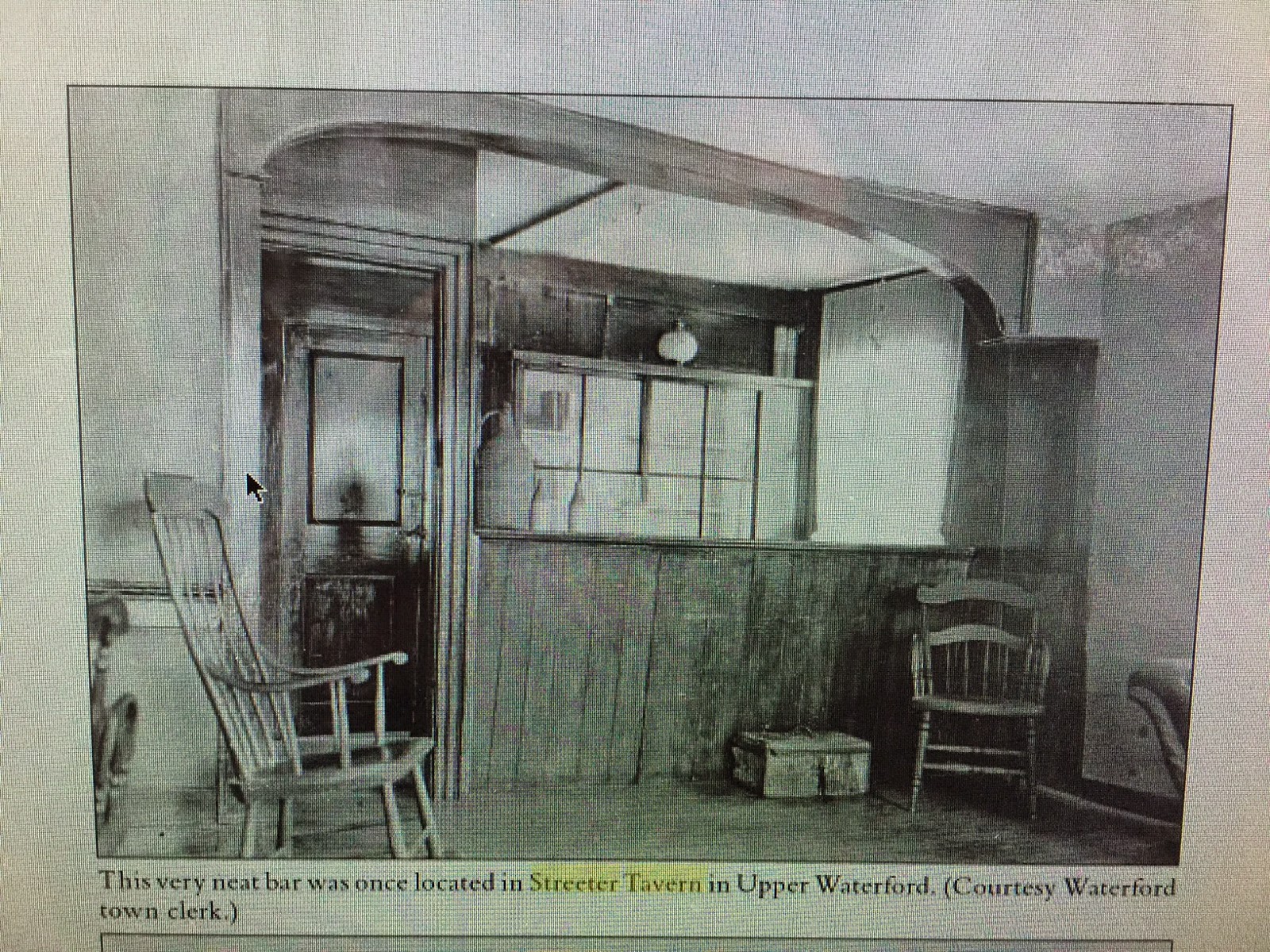The first saw-mill was built by Solomon Pomeroy, just below Mrs. Hibbard's brick house, at Upper village. John Stiles built a saw-mill at the outlet of Stiles pond, in 1807, and also built an oil-mill here in 1818. The first hotel was built by Warner Call, nearly opposite the store at Upper village. Nathan and Dennis Pike built the Streeter tavern in 1823, and kept it for many years. The first school kept in the eastern part of the town was by Candace Billings, in Daniel Pike's barn. The first church was built in 1818, near the center of the town. It was a large two-story structure, with a gallery on three sides.There's a lot in there to examine and compare with today! The "Upper village," or Upper Waterford, is gone -- sacrificed in the 1930s to plans to build the Moore Dam on the Connecticut River, which would create a lake at the village location. The Upper village, where Daniel and Nathan Pike settled, was the eastern part of town and was called "Upper" because it was up-river from the rest of the town.
... Daniel and Nathan Pike, Jonathan Hutchinson and Luther Knight came to Waterford, form Royalston, Mass., and located in the eastern part of the town, in 1792.
More about the tavern, the Pikes, and their significance in the town is found in Frederic J. Wood's 1919 tome, The Turnpikes of New England. These were the toll roads, set up for commerce (and to let the landowners and road owners earn some fees). Here are the actual pages -- with page 260 being the one with the photos, above.
Dolores E. Ham brought out the book Caledonia County (Images of America) in 2000 (now available also as an ebook), and used two images of the Streeter Tavern in it, borrowed from the Wateford Town Clerk. Here they are:
And finally, of course, Gordon Hopper's Upper Waterford—A Village Lost to Progress offers the most detail on the history of the tavern. He writes that Nathan and Daniel Pike had a small farmhouse located at the crossroad in the village, and they converted it into a tavern in 1823. "The building was used for public gatherings, dances, religious and political meetings." After some years, the Pikes' tavern was taken over by Jeff Hosmer. In 1864 Timothy Streeter bought it; he closed it in 1874. Hopper says that "its patronage included stage coach drivers and passengers, freight wagon drivers and teamsters, drovers, drummers, private travelers, summer boarders, local barflies and those who needed a public hall. Balls and parties, meetings, funerals and court sessions were helpd in the old tavern and for a short time, part of it served as the town's library" -- with librarian Caroline Streeter.
The building then became a private home, and in 1926 it was purchased by the Connecticut RIver Development Company. Hopper says that it was used as a rooming house for men constructing the dam, until destroyed by fire "of an unknown origin" on January 1, 1930.
He also mentions Eugenia Powers' description of the interior of the tavern, which appeared in the 1978 Waterford Town Report (to follow).











